A cube of edge length 10 cm is just balanced at the interface of two liquids A and B as shown in figure. If A and B has specific gravity 0.6 and 0.4 respectively, then mass of cube is
240 g
360 g
480 g
540 g
The correct Answer is:C
Step by step video solution for A cube of edge length 10 cm is just balanced at the interface of two liquids A and B as shown in figure. If A and B has specific gravity 0.6 and 0.4 respectively, then mass of cube is by Physics experts to help you in doubts & scoring excellent marks in Class 12 exams.
Updated on:21/07/2023Topper's Solved these Questions
- RACEBOOK - ALLENCHAPTER - RACEEXERCISE - Basic Maths (Properties of Matter & Fluid Mechanics)(Surface Tension)
26 Videos
- RACEBOOK - ALLENCHAPTER - RACEEXERCISE - Basic Maths (Thermal Physics) (Temperature scales & thermal expansion)
13 Videos
- RACEBOOK - ALLENCHAPTER - RACEEXERCISE - Basic Maths (Properties of Matter & Fluid Mechanics)(Fluid Dynamics + Viscosity)
18 Videos
- NEWTONS LAWS OF MOTIONBOOK - ALLENCHAPTER - NEWTONS LAWS OF MOTIONEXERCISE - EXERCISE-III
28 Videos
- SIMPLE HARMONIC MOTIONBOOK - ALLENCHAPTER - SIMPLE HARMONIC MOTIONEXERCISE - Example
1 Videos
Similar Questions
A cube of density p is just balanced at interface of two unmixable liquid A and B having density p1 and p2 respectively as shown, then the fraction of volume of cube in the upper liquid is (p2<p<p1)
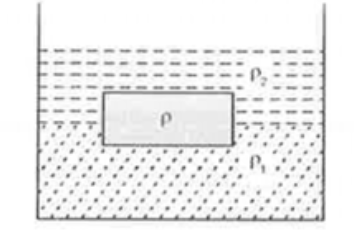
View SolutionThe weight of a body at earth's surface is W. At a depth half way to the centre of earth it will weight
View SolutionA cubical block of side 10cm floats at the interface of an oil and water as shown in the figure. The density of oil is 0.6gcm−3 and the lower face of ice cube is 2cm below the interface. The pressure above that of the atomosphere at the lower face of the block is
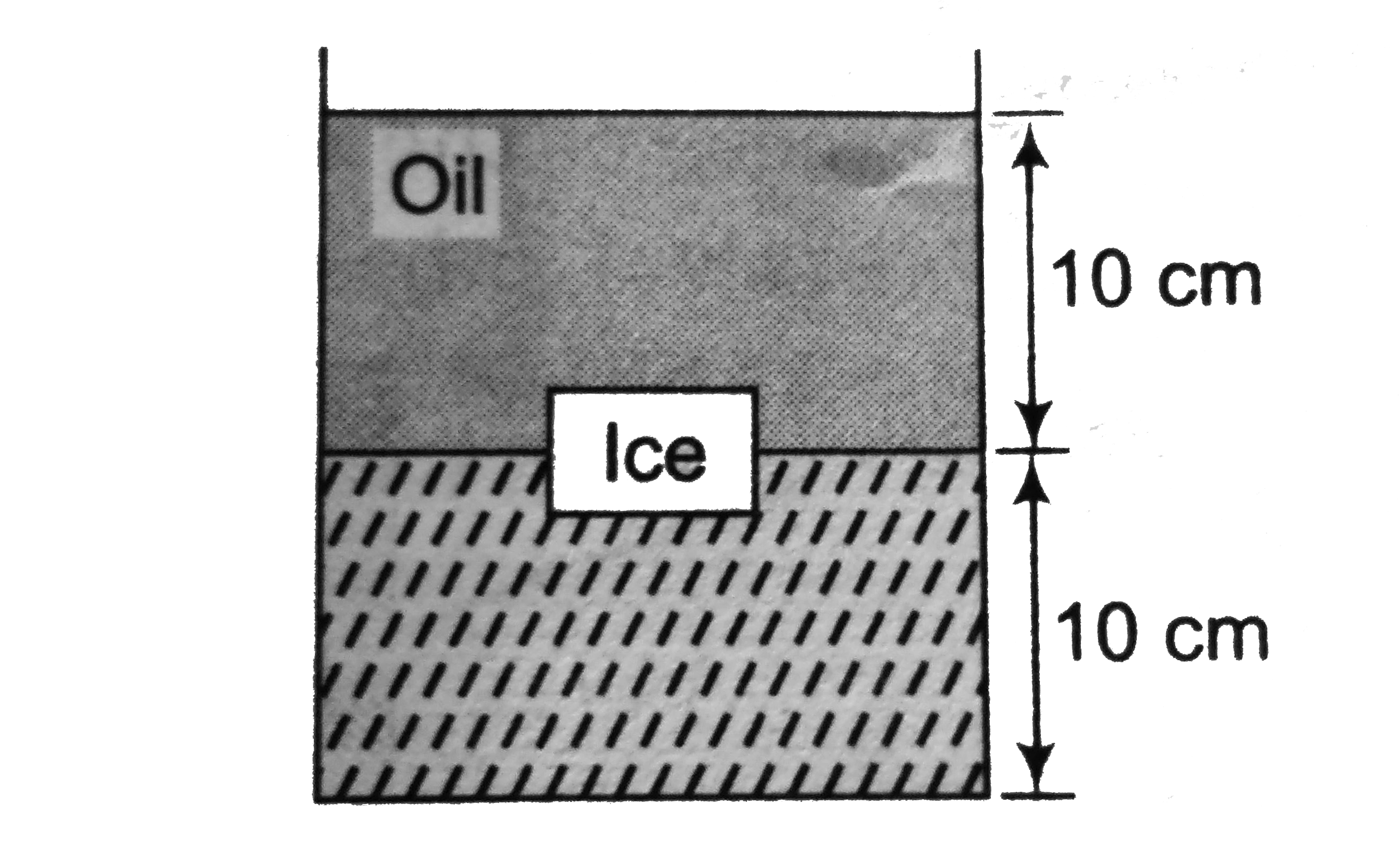
View Solution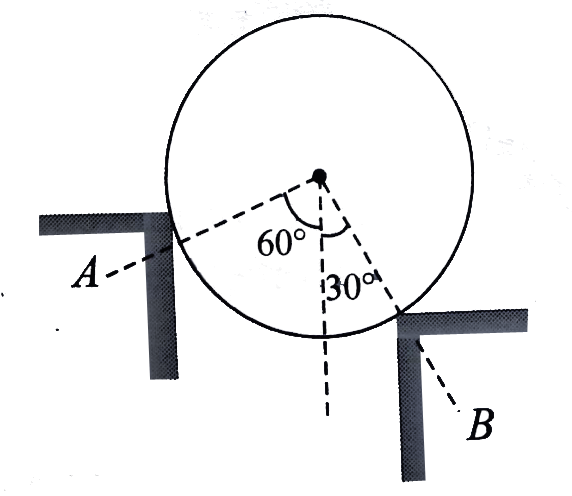
A cylinder of mass M and radius R is resting on two corner edges A and B as shown in figure. The normal reaction at the edges A and B are: (Neglect friction)
View Solution
A cylinder of mass M and radius R is resting on two corner edges A and B as shown in figure. The normal reaction at the edges A and B are: (Neglect friction)
View SolutionThe density of a cube is found by measuring its mass and the length of its side of the maximum errors in the measurement of mass and length are 0.3% and 0.2% respectively, the maximum error in the measurement of density is
View SolutionA container contains three liquds as shown in the figure. The specific gravity of liquid 1 and liquid 2 are 0.8 and 1.2 respectively. A small hole having area 10−6m2 at point P is as shown in the figure. Initially hole is closed. The cross-sectional area of container is 50cm2. assume all liquids ae ideal and neglect any type of friction between liquid and container. (Given that g=9.8m/s2 and h=28cm)
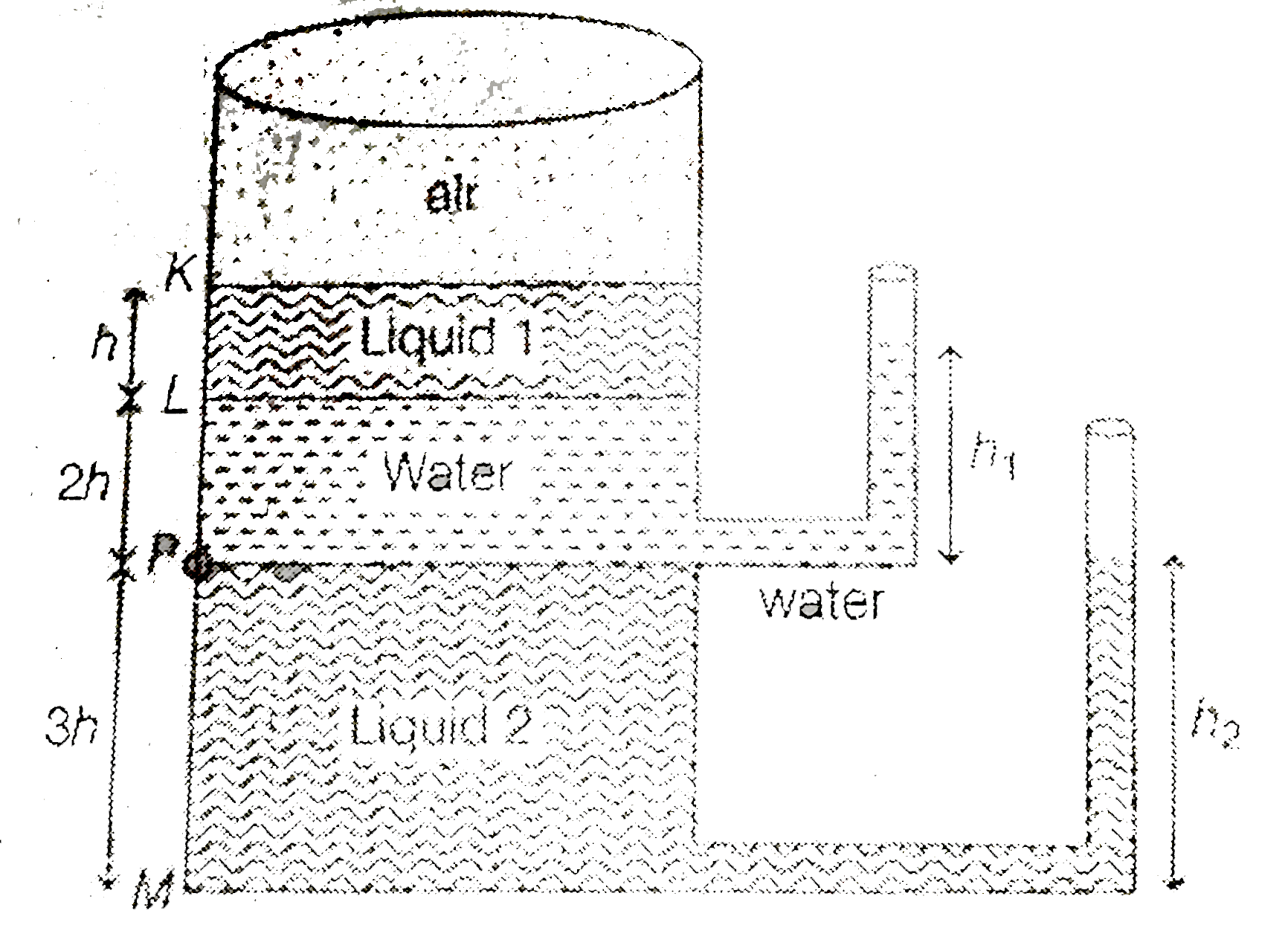
At some instant, hole is opened. the speed of water coming out from hole just after the opening of hole is
View SolutionAn ice cube of side 1cm is floating at the interface of kerosene and water in a beaker of base area 10cm2. The level of kerosene is just covering the top surface of the ice cube.
a. Find the depth of submergence in the kerosene and that in the water.
b. Find the change in the total level of the liquid when the whole ice melts into water.
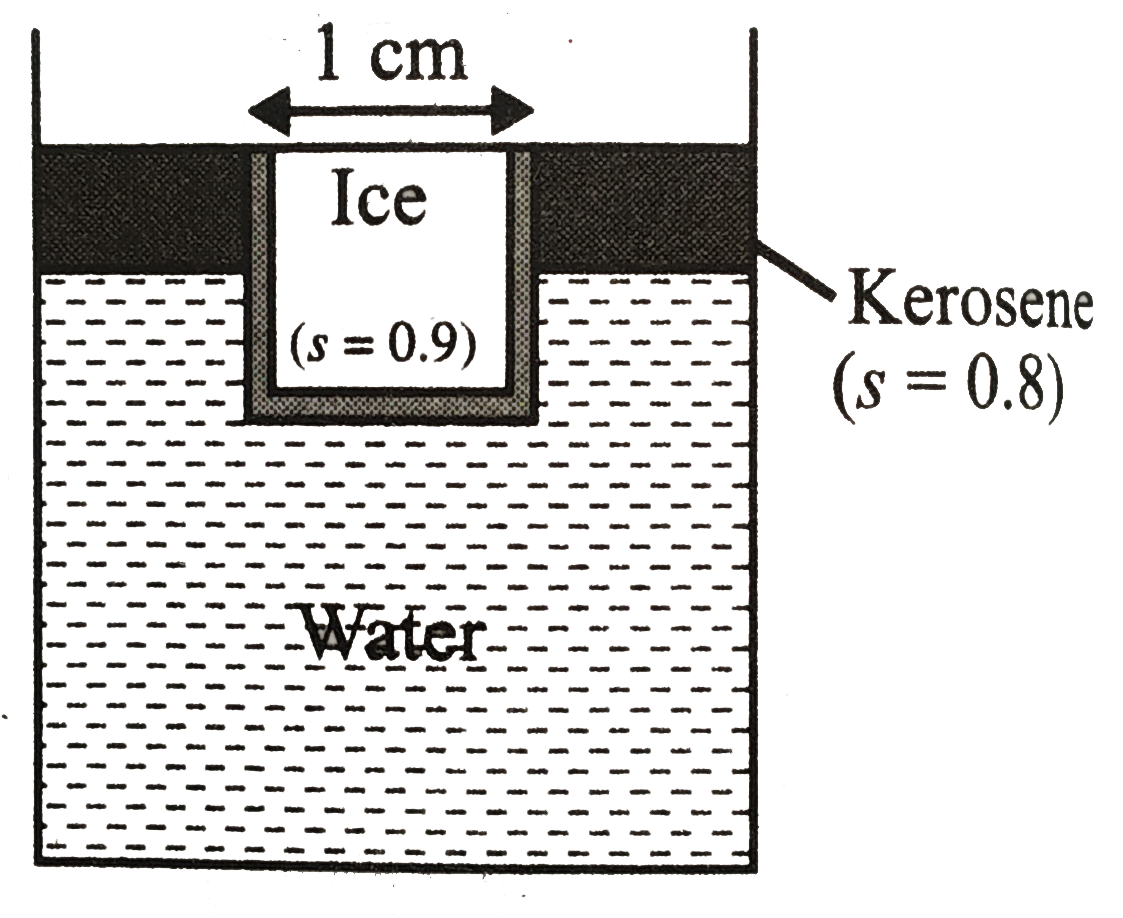
View SolutionTwo bars of thermal conductivities K and 3K and lengths 1cm and 2cm respectively have equal cross-sectional area, they are joined lengths wise as shown in the figure. If the temperature at the ends of this composite br is 0∘C and 100∘C respectively (see figure), then the temperature ϕ of the interface is
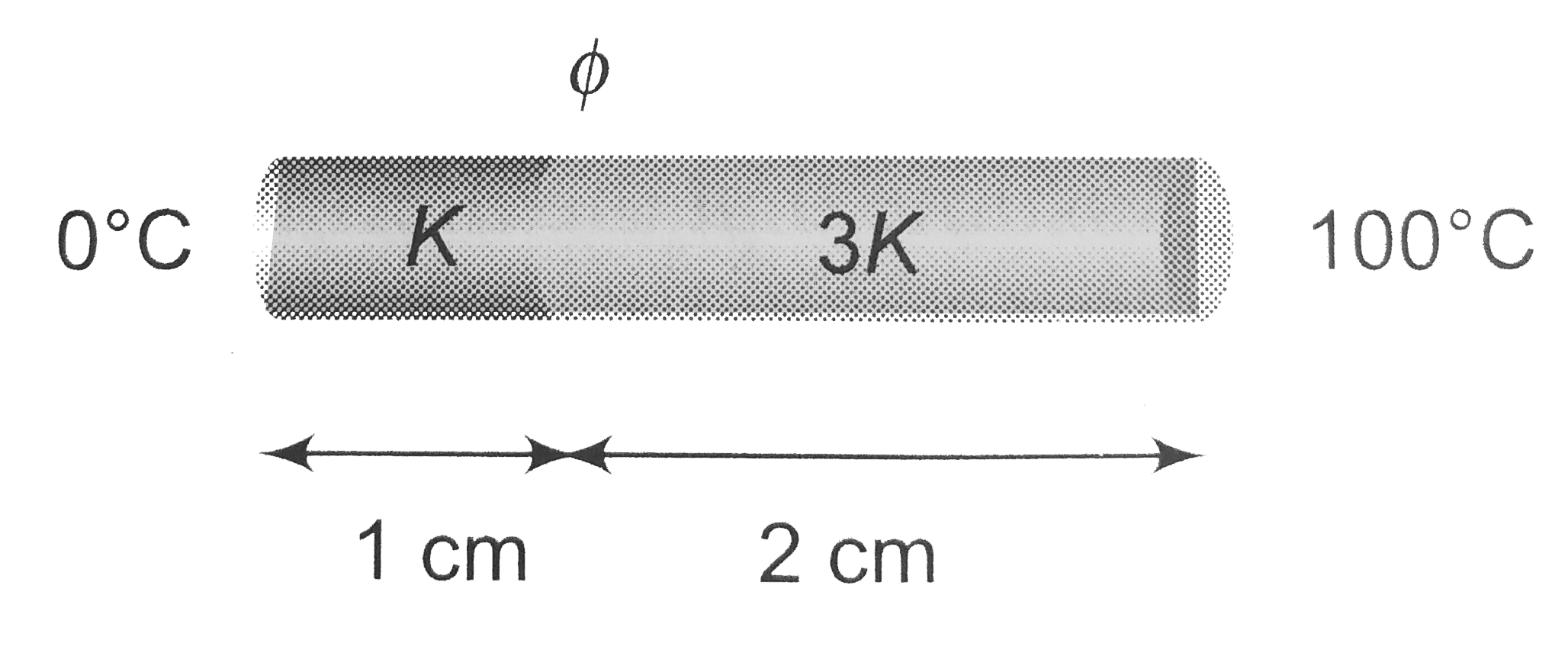
View SolutionA cube has sides of length L. It is placed with one corner at the origin as shown in figure. The electric field is uniform and given by E=−Bˆi+Cˆj−Dˆk, where B, C and D are positive constants.
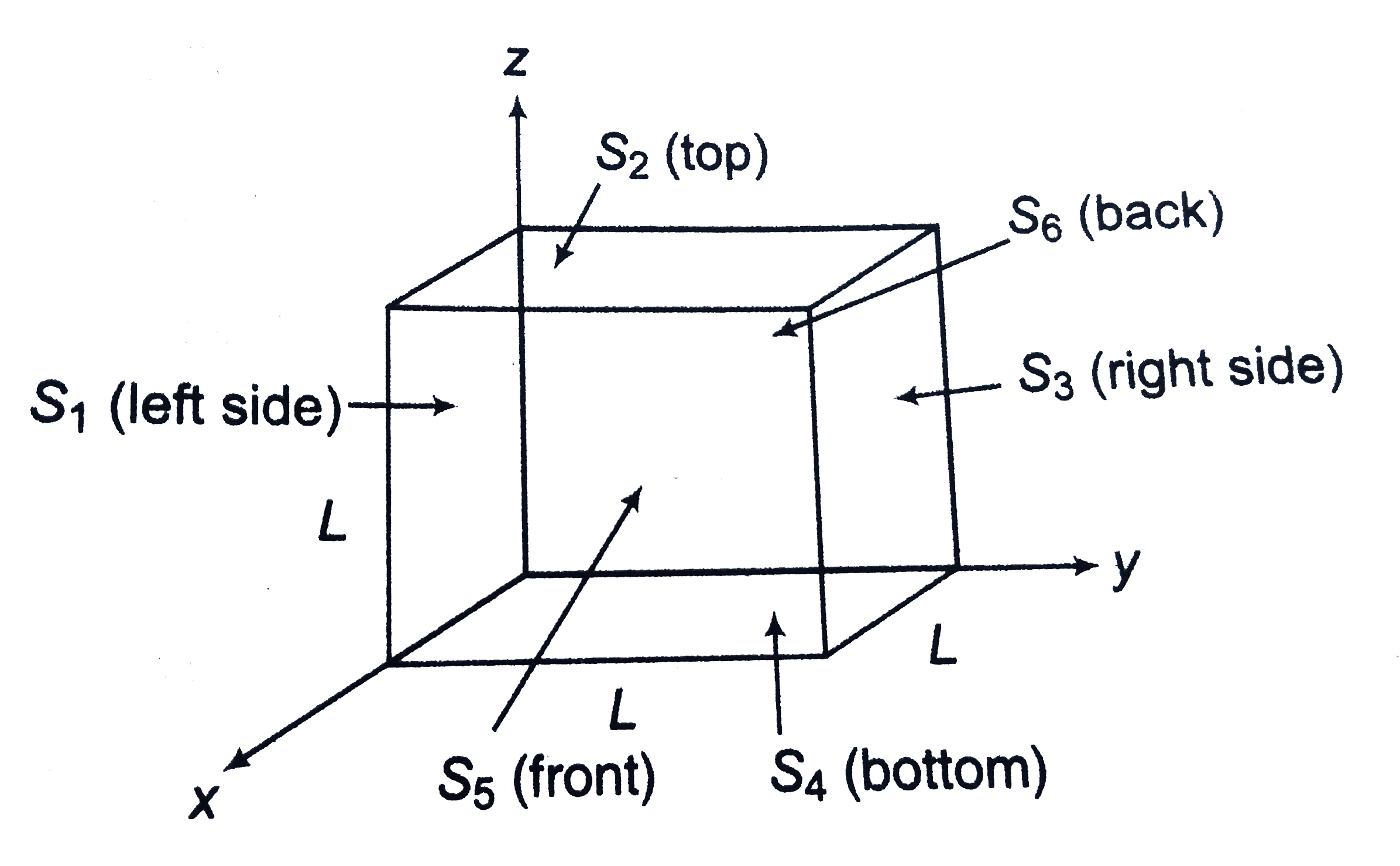
(a) Find the electric flux through each of the six cube faces S1,S2,S3,S4andS5andS6.
(b) Find the electric flux through the entire cube.
View Solution
